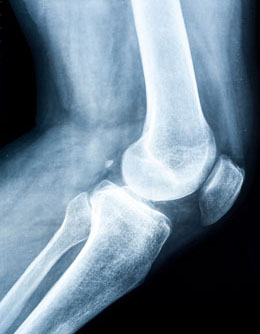A kneecap dislocation or patellar subluxation involves causing the kneecap to get free from the rest of the knee due to an injury, faulty walking or running, etc. This article elaborates on its symptoms, treatment, exercises, and recovery time.

There are three bones that make up the knee joint: the femur (thigh bone), the tibia (shin bone), and the patella (kneecap). The kneecap is located in a groove which is known as the trochlea. When there is movement in the knee, i.e., when the knee bends or straightens, the kneecap moves in the groove. But sometimes, it moves out of its groove, which happens due to an injury. Thus, it gets free from the rest of the knee, causing dislocation.
Symptoms and Causes
Some people are generally more prone to it than others. Women are said to have a higher risk of dislocation than men. People who are more likely to get it may have an unusual style of walking, a wider pelvis, or a shallow groove which holds the kneecap. Due to these reasons, they have a lower resistance. Its direct causes involve rough landing on the knee while walking or running, or a blow to the outer side of the knee. While most people can stomach the blows and rough landings, people having the problems outlined above have lesser resistance to the same.
The symptoms are as follows:
- Kneecap pain while running or walking
- Tenderness in knee
- Swelling
- Kneecap becomes more flexible than usual
- It moves to the outer side of the knee
- Discomfort while walking/running
- Knee pain
Dislocation Treatment
The treatment depends on the extent of injury. Mostly, the kneecap comes out due to a tear in the patellofemoral ligament. So, the best way to treat a non-serious dislocation is to immobilize it. A brace can be worn to keep the knee together and ensure that excess pressure does not fall on the knee while the ligaments grow back. It will need to be immobilized for a period of 7-10 days. The patient will then have to go for physiotherapy with the help of exercises, which will also help in strengthening the quadriceps muscle. The recovery time using this nonoperative treatment is 3-6 weeks.
But once any ligament tears, the chances of a recurrence of knee dislocation and a torn ligament increases. Hence, if the problem seems to be recurring, one can opt for surgical treatment. The doctor will look into the knee with an arthroscope to find out the exact cause, whether it is simply a dislocation or the groove of the kneecap is shallow, and then decide on a corrective surgery. Surgery is said to be a more common form of treatment in case of sportspersons, as it reduces the chance of frequent recurrence. A person can start moving the knee 6 weeks after a successful operation, and can resume training after 12 weeks.
Prevention
Surgery or knee immobilization is not a very pleasing experience for the patient. 12 weeks is a long time for recovery, and hence, it may be a good idea to invest some time in learning ways to prevent it. Firstly, there may be a problem in the way you walk/run. This leads to a continuous pressure on the knees and the ligament, and hence, over a period of time, there are chances that the ligament may degenerate and tear. Secondly, you should also ensure that you regularly exercise, stretch, and condition the quadriceps to maintain a stable, injury-free knee.


 There are three bones that make up the knee joint: the femur (thigh bone), the tibia (shin bone), and the patella (kneecap). The kneecap is located in a groove which is known as the trochlea. When there is movement in the knee, i.e., when the knee bends or straightens, the kneecap moves in the groove. But sometimes, it moves out of its groove, which happens due to an injury. Thus, it gets free from the rest of the knee, causing dislocation.
There are three bones that make up the knee joint: the femur (thigh bone), the tibia (shin bone), and the patella (kneecap). The kneecap is located in a groove which is known as the trochlea. When there is movement in the knee, i.e., when the knee bends or straightens, the kneecap moves in the groove. But sometimes, it moves out of its groove, which happens due to an injury. Thus, it gets free from the rest of the knee, causing dislocation.